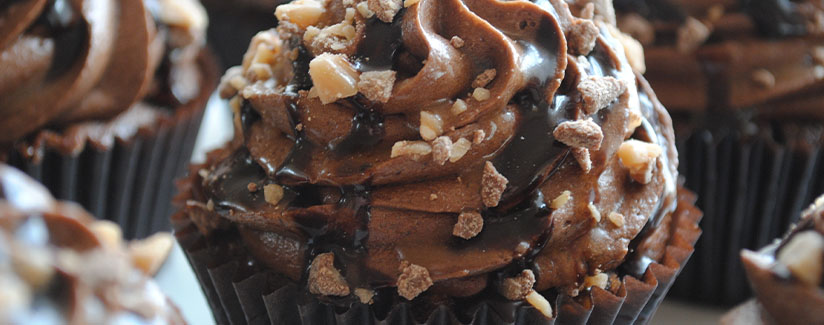
Behold the Sweet Benefits of Chocolate
Originally posted February 2, 2015.
Chocolate-covered strawberries, anyone? With Valentine’s Day approaching, there’s one thing we just can’t get off our minds: chocolate! This decadent treat makes an appearance at most major (and even minor) holidays, but it’s on February 14 when it truly shines. In honor of this sweet day, we wanted to treat you with some facts that just might have you reaching for another piece of chocolate (everything in moderation, right?).
Carolyn O’Neil, MS, RD, tells us that the headlines about chocolate being good for our health are indeed true! Why? Chocolate is made from flavonoid-rich cocoa beans. Flavonoids are plant nutrients that help protect them from environmental toxins and help repair damage. Luckily for us humans, we also benefit from the antioxidant power of flavonoids. The main type of flavonoid found in cocoa is flavonols. Flavonols not only have antioxidant qualities, but according to research, can also influence vascular health, such as lowering blood pressure, improving blood flow to the brain and heart, and making blood platelets less sticky and able to clot.
Joshua D. Lambert, PhD, Associate Professor of Food Science at Penn State’s College of Agricultural Sciences, adds that laboratory studies (in cells and animal models) have shown that cocoa (chocolate has not been examined):
- has anti-inflammatory effects,
- reduces the severity of non-alcoholic fatty liver disease, and
- improves markers of cardiovascular disease.
If you’re not a fan of chocolate (WHAT?!), Dr. Lambert shares that green tea, blueberries, cranberries, and cinnamon are all polyphenol-rich food ingredients or foods that have been shown to have somewhat similar effects.
We can also take comfort in the fact that the fat in chocolate comes from cocoa butter and is made up of equal amounts of oleic acid (a heart-healthy monounsaturated fat also found in olive oil), stearic and palmitic acid. According to research, stearic acid appears to have a neutral effect on cholesterol levels, neither raising nor lowering it. Palmitic acid, on the other hand, does affect cholesterol levels, but it only makes up one-third of the fat calories found in chocolate.
Not all chocolate is created equal, so we asked Carolyn and Dr. Lambert to break down the differences between dark, milk, and white chocolate:
Dark chocolate is higher in antioxidant power due to its higher cocoa content – that’s why it’s bitter. The higher the cocoa content, the more bitter the taste. Dr. Lambert adds that when it comes to chocolate and health, people have mainly focused on the cocoa polyphenols. Cocoa polyphenols are found in the non-fat cocoa solids part of chocolate (i.e., the non-fat part of the cocoa powder). Non-fat cocoa solids also contain fiber and theobromine, which may have health-related effects. As we mentioned above, dark chocolate has a higher cocoa content and so it contains more of these compounds.
Milk chocolate tends to be the most popular despite having less antioxidant power than dark chocolate. Milk chocolate has a creamier texture and lighter brown color because it contains more milk and dairy fat than dark chocolate.
White chocolate…is not actually chocolate as it contains no dark cocoa powder. Rather, it’s a rich combination of sugar, milk solids and cocoa butter. White chocolate tends to be higher in calories than dark and milk chocolate.
This good news doesn’t mean you can eat endless amounts of chocolate – but it does mean that you don’t have to feel guilty when you do decide to treat yourself. Carolyn says it’s okay to savor a small piece (preferably dark chocolate) once in a while and recommends pairing it with other flavonol-containing foods such as strawberries or cherries. For the culinary enthusiasts out there, we reached out to Chef Renee Kelly from Bravo’s Top Chef and Renee Kelly’s Harvest in Shawnee, KS for her recommendations and favorite chocolate food and wine pairings. Check ‘em out in the infographic below.
“Chocolate Toffee Cupcakes” by DixieBelleCupcakeCafe is licensed under CC BY ND 2.0.



























